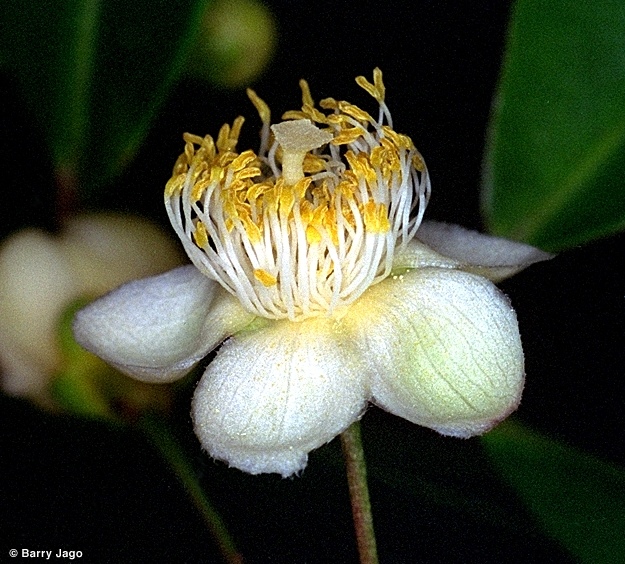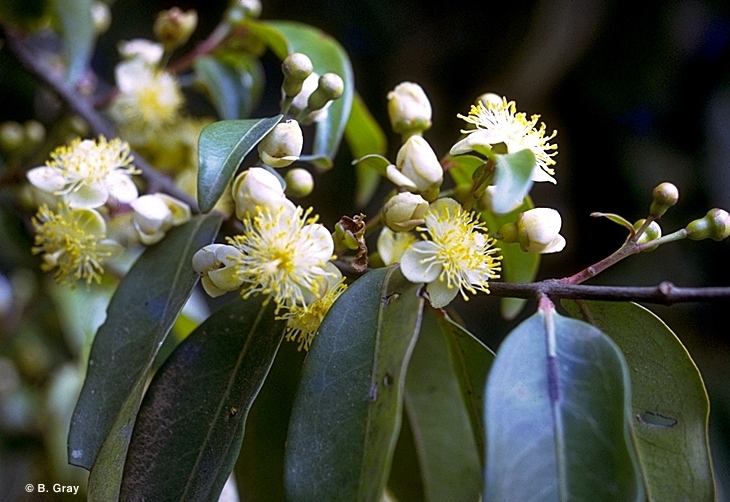Australian Tropical Rainforest Plants - Online edition
Pilidiostigma tropicum L.S.Sm.






Smith, L.S. (1956) Proceedings of the Royal Society of Queensland 67: 36. Type: QUEENSLAND. Cook District: .. Glen Allyn, J.L. Tardent sn, 18 Oct. 1929, Holo: BRI.
Apricot Myrtle
Cambial layer very yellow. Dead bark layered. Blaze may have an odour like freshly peeled potatoes (Solanum tuberosum).
Leaf blades about 4.5-8 x 2-3.8 cm. Two or sometimes three intramarginal veins visible. Petiole channelled on the upper surface, the margins of the channels thin, membranous, wavy and often red. Oil dots visible with a lens if not visible to the naked eye.
Fruits ovoid, about 12-15 x 11-13 mm, calyx lobes persistent at the apex. Seeds about 7-8 x 6-7 mm. Testa +/- smooth but marked by numerous, large, yellow oil glands. Cotyledons fused together.
Two or three pairs of small, linear or leaf-like cataphylls are usually produced before the first pair of true leaves. First pair of true leaves ovate or elliptic, about 6-14 x 3-9 mm, apex retuse. Small oil dots visible with a lens. At the tenth leaf stage: leaf blade lanceolate or ovate, glabrous; oil dots small and numerous, visible with a lens; stem shortly 4-winged. Seed germination time 28 to 78 days.
Endemic to NEQ, widespread in the area. Altitudinal range from near sea level to 1000 m. Grows as an understory tree in well developed rain forest on a variety of sites.
Fruit eaten by Fruit Pigeons and Spectacled Foxes. Cooper & Cooper (1994).
A beautiful small tree well worthy of a place in horticulture. The leaves are glossy dark green and the flowers which are white with prominent yellow stamens are followed by black fruits.





